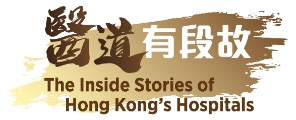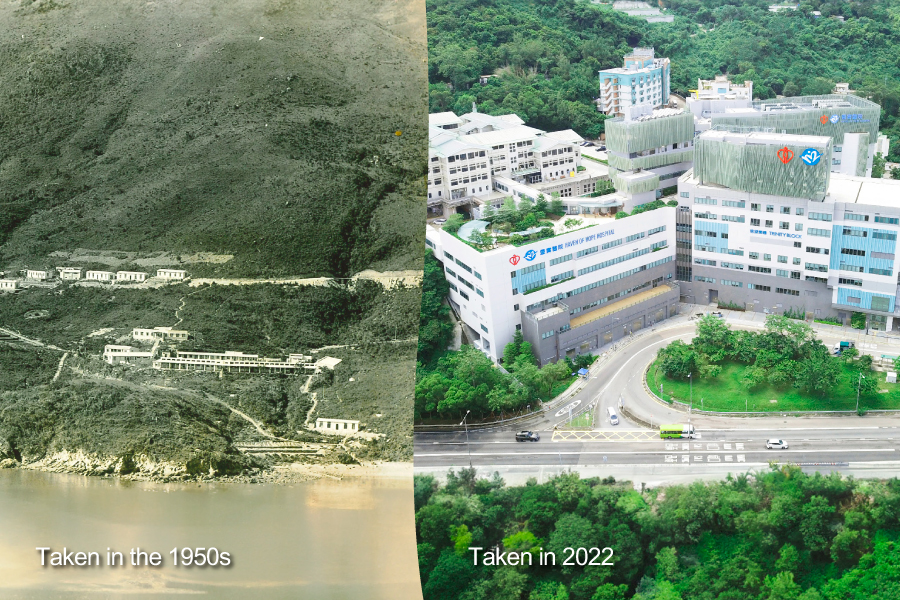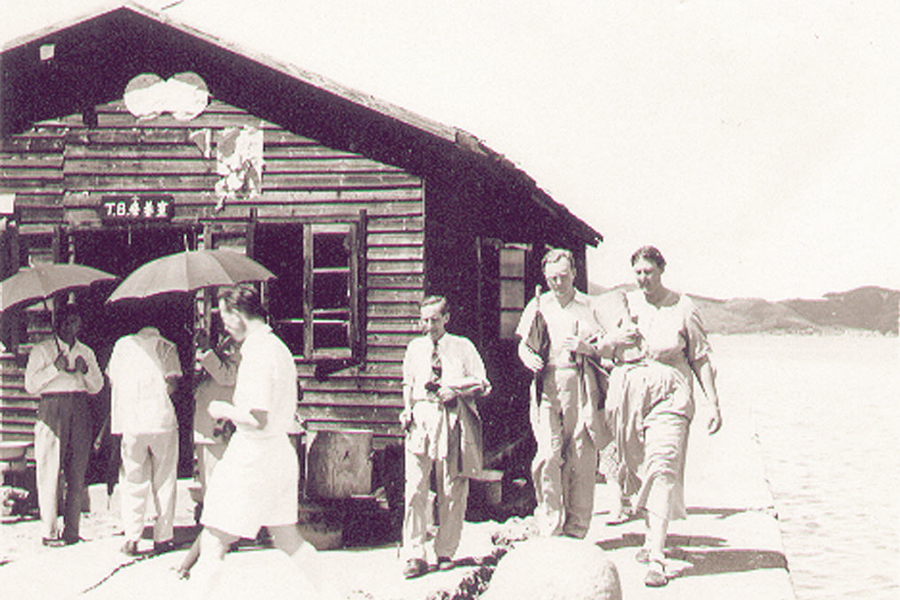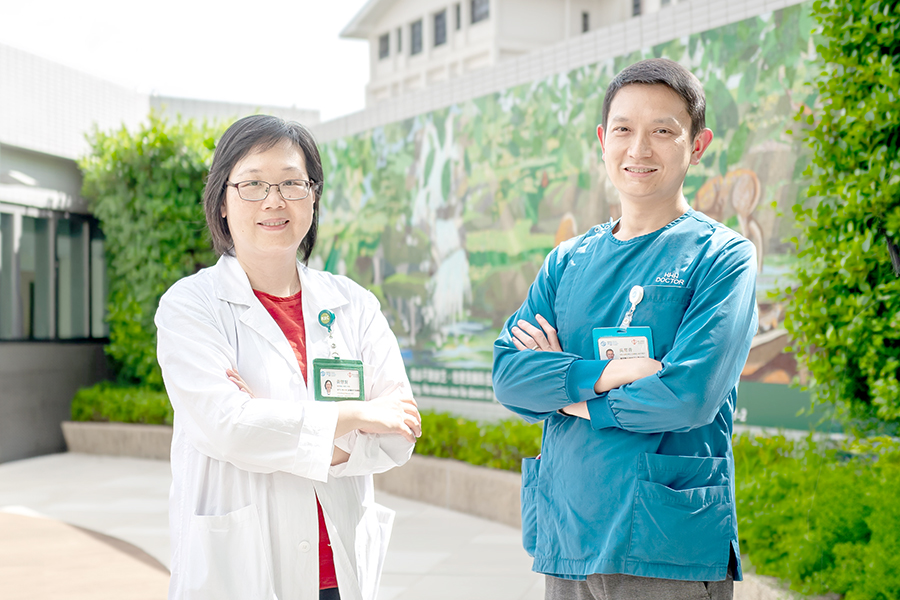
Haven of Hope provides a blessed sanctuary for society’s marginalised
 Walking around the Haven of Hope Hospital, you will quickly notice some unique details. Wards, for instance, are not named simply by numbers and letters but with Biblical references to give them titles such as the Joy Ward, the Gentleness Ward and the Goodness Ward. The unusual names come from the Chinese name of the hospital which is drawn from a famous passage in the Bible: “The fruit of the Spirit is love, joy, peace, longsuffering, gentleness, goodness, faith, meekness, and temperance.” The English name of the hospital, meanwhile, reminds people of a time nearly 70 years ago when the hospital was built in front of the boundless sea.
Walking around the Haven of Hope Hospital, you will quickly notice some unique details. Wards, for instance, are not named simply by numbers and letters but with Biblical references to give them titles such as the Joy Ward, the Gentleness Ward and the Goodness Ward. The unusual names come from the Chinese name of the hospital which is drawn from a famous passage in the Bible: “The fruit of the Spirit is love, joy, peace, longsuffering, gentleness, goodness, faith, meekness, and temperance.” The English name of the hospital, meanwhile, reminds people of a time nearly 70 years ago when the hospital was built in front of the boundless sea.
In 1953, thousands of refugees from the Mainland China flooded into Hong Kong residing in Rennie’s Mill. Given the poor living conditions and malnutrition, a lot of refugees were suffered from tuberculosis. A group of foreign missionaries, including sister Annie Skau Berntsen from Norway, built a tuberculosis sanatorium on a barren hillside, relying on basic medical equipment such as thermometers and sterilised gauze, using apple crates for tables and chairs, and operating on donations from foreign churches and well-wishers.
 With the need for further expansion in the community, the Haven of Hope Tuberculosis Sanatorium was subsidised by the government in the 1970s and renamed Haven of Hope Hospital (HHH). It joined the Hospital Authority in 1991 and became the leading rehabilitation and extended care hospital in the Kowloon East Cluster, providing general medical, geriatric, rehabilitation, pulmonary, palliative care, orthopaedic (rehabilitation) and infirmary services.
With the need for further expansion in the community, the Haven of Hope Tuberculosis Sanatorium was subsidised by the government in the 1970s and renamed Haven of Hope Hospital (HHH). It joined the Hospital Authority in 1991 and became the leading rehabilitation and extended care hospital in the Kowloon East Cluster, providing general medical, geriatric, rehabilitation, pulmonary, palliative care, orthopaedic (rehabilitation) and infirmary services.
The expansion project completed last year brought the total number of beds in the hospital to over 600. Lee Yin-ching, Ward Manager of Geriatrics and Rehabilitation Service, who joined HHH in 1991, describes the fifth wave of the epidemic as her greatest challenge at work. “The hospital faced tuberculosis decades ago, and now we had to fight another war with all our heart and soul,” she reflects. “When the fifth wave of the epidemic struck, the Trinity Block had just been built so we were able to transform the hospital to receive acute COVID-19 patients within a short period of time. It felt like it was the hospital’s calling.”
 Dr Jeffrey Ng, Deputy Chief of Service of the Department of Medicine, who has been working at HHH for more than 20 years, says it has always been a haven for people neglected by society. In the early 1970s, HHH was the only hospital in Hong Kong to help tuberculosis patients addicted to drugs to detoxify, giving some addicts a new start in life after they successfully quit drugs during their hospitalisation. The hospital started its hospice service as early as 1987. He points out that the hospital’s Palliative Care Unit was the first in Hong Kong to care for AIDS patients in the 1990s when AIDS was still a dreaded disease, and the medical professionals tried their best to help the patients walk through their final journey with dignity.
Dr Jeffrey Ng, Deputy Chief of Service of the Department of Medicine, who has been working at HHH for more than 20 years, says it has always been a haven for people neglected by society. In the early 1970s, HHH was the only hospital in Hong Kong to help tuberculosis patients addicted to drugs to detoxify, giving some addicts a new start in life after they successfully quit drugs during their hospitalisation. The hospital started its hospice service as early as 1987. He points out that the hospital’s Palliative Care Unit was the first in Hong Kong to care for AIDS patients in the 1990s when AIDS was still a dreaded disease, and the medical professionals tried their best to help the patients walk through their final journey with dignity.
Dr Wong Wei-yin, Deputy Hospital Chief Executive says, “to respond to the needs of the community, the first step is to listen. Since it was established, the hospital has been listening to patients carefully and attentively.” The pressure on carers draws the attention of the community in recent years, she adds, an Integrated Carers’ Support Centre has been set up to provide better support for the carers. Overlooking from the newly built Trinity Block, the waters of Rennie’s Mill have long been reclaimed for high-rise buildings, but the hospital is still a ‘haven of hope’ for the underprivileged and people in need, as faithful as it has been for many years.